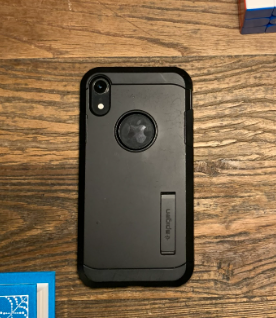Dopamine detox: real or myth?

April 18, 2023
As the effects of phones on teens continue to strengthen, many have wondered if there is any way out of the spiral that they find themselves in. Our phones have dramatically altered the way that we live our lives. 84% of teens say that they own a phone, spending on average over seven hours a day on non-school related screen time, according to NPR.
All of this time spent staring at a screen comes with a price. Social media, in particular, has become a plague to many 21st-century teens. It not only has been shown to trigger feelings of isolation, unhappiness, envy, inadequacy, and self-centeredness, but amplifies chances of depression, anxiety, and sleeping troubles.
Social media is so successful because it has learned how to train our brains to release as much dopamine as possible. Scrolling through your favorite social media platform is a perfectly designed process. It activates the brain’s reward system, creating a high similar to gambling or other addictive behaviors. Social media platforms even promote content you might not like so that when you find something you do enjoy, it releases an even larger burst of dopamine. Social media acts similarly to a famous study by Ivan Pavlov. It observed that dogs could be trained to salivate on command by giving meat whenever a bell was rung. Our brains (the dogs) become addicted to social media (the bell) because they know that they will have a rush of dopamine (the meat).
Social media apps have trapped the minds of teenagers, kids, and adults alike and are slowly ringing them out for every ounce of profit they can get. Social media platforms are free for a reason, you are not the customer, advertisers are the customers. Your data and attention are the products. This is why social media platforms try to hold you hostage on their app for as long as possible. The longer you stay, the more money they make. “Behind every screen on your phone, there are generally a thousand engineers that have worked on this thing to try to make it maximally addicting,” said Aza Raskin, creator of infinite scroll, in an interview with BBC in 2018.
Every feature is deliberate. Feeds are endless to trap you in a continuous cycle of clicking. Like counts keep consumers coming back to check if the number has increased.
For many people, social media has become something not to be enjoyed, but to be craved. Think about it, how many times during the day do you take out your phone because of some magnetic pull towards it?
However, despite not being as widely recognized as other addictions, an addiction to social media can be combated just like any other. One of these strategies, ironically propagated across many of the platforms that it hopes to reduce the use of, is dopamine detoxing or fasting.
Dopamine detoxing is based on the belief that by reducing your dopamine levels, you will reprogram your mind’s expectation of the chemical. Detoxing is promised to make you more productive and successful with your goals by retraining your brain of how to be bored, and devoid of short-term entertainment in pursuit of the ability to stay focused longer. Many articles claim that abstaining from social media for 1-30 days will be able to cleanse all dopamine from your system.
Yet, the version of dopamine detoxing popularized across the internet is complete fiction. Because of human nature, we yearn for an easy cure, a pill that we can take with little effort to solve all of our problems, something which these internet articles promise despite any scientific evidence.
Dopamine is not something that can be cleaned away. If you were able to purge all dopamine from your system, it would kill you. However, reducing your exposure to social media can help you identify unhealthy parts of your relationship with it, undo addictions, and improve your level of happiness.
By reducing your reliance on social media for short-term pleasure, you can enjoy the simpler parts of life that may be overshadowed by it. Think of it as if you were trying to train your brain to enjoy a salad rather than a bowl of ice cream, the latter is a quick and significant boost of dopamine and enjoyment, while the former is a long-term, healthier helping of dopamine.
An essential first step in finding these benefits is to spend time away from your phone. The initial detox should last for around a week, a period that you should slash social media, gaming, and other behaviors that negatively affect you. Ensure that barriers prevent your access to these addictions. Replace them with healthier behaviors, exercising, reading, working, studying, etc., for your life outside of social media needs to be more interesting than one with it.
But, this period should act as a trial run, the real effects will come from the new habits that you create afterward. While you don’t need to entirely cut out social media from your life, your period of abstinence should show you that the world outside of it is a healthier and happier one. Create limits for your consumption of social media and detach yourself from being the prey.
In a world where giant corporations war over our attention, PAHS students and staff need to fight back. To have a healthy relationship with your phone is to have a freer and happier relationship with life in general. Dopamine detoxing does not have to be a myth; it can be a reality and help you make a positive change in your life.



